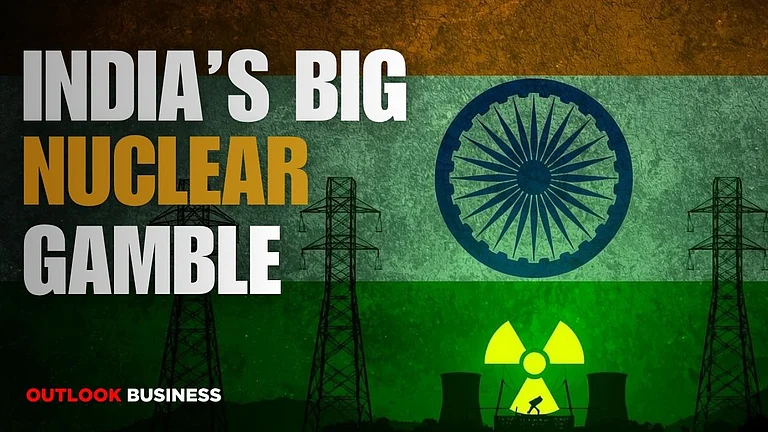What lessons did the Kargil War teach us about the importance of self-reliance in defence procurement and preparedness?
We faced severe shortages and Western countries led by the US, which had imposed sanctions after our nuclear tests, proved to be a major chokepoint. We couldn’t import what we needed and even supplies from Russia and South Africa were either outdated or inadequate. That was when I strongly and publicly advocated for self-reliance.
The battlefield doesn’t wait for imports. During Kargil, Western suppliers weren’t an option—and even if they were, they don’t sell their most advanced systems.
Off-the-shelf equipment requires testing, training, integration and maintenance, making it ineffective in fast-moving, short-duration conflicts.
Geopolitical dynamics further complicate matters. At critical moments, based on shifting political ties, equipment or spares, might be withheld—creating serious vulnerabilities. In 1999, we faced a spares crunch, which rendered some of our Bofors guns unusable. That’s why true security demands self-reliance.
Do you believe India's economic ambitions can be realised without a credible military deterrent?
Security and development are symbiotic. Security provides the opportunity and confidence to grow. And broader economic growth strengthens national security.
How do you view the evolution of India’s military doctrine—from strategic restraint to the assertiveness of Operation Sindoor?
Over the past four decades, we’ve faced a proxy war initiated by our western neighbour. Though it began using terror elements in 1947, this has now evolved into a deep nexus between its military and terrorist groups. Pakistan initiated every war.
Until 2016, our response to terrorism followed a pattern of strategic restraint. We focused on preventing infiltration and neutralising militants inside our territory. A few cross-border raids occurred but lacked formal political backing.
The Uri attack in 2016 marked a turning point. For the first time, we carried out a surgical strike with full political approval. Though limited in scope, it sent a message. Then came Pulwama in 2019. Again, with political backing, the Air Force struck a terrorist camp in Balakot—not in PoK, but in Khyber Pakhtunkhwa. This was another crucial doctrinal shift.
Even so, subsequent terror attacks revealed these actions weren’t deterrent enough. Operation Sindoor has changed that to a considerable extent. With the prime minister declaring any terror act an act of war, we’ve entered a new doctrinal phase.
Security and development are symbiotic. Security provides the opportunity and confidence to grow. And broader economic growth...strengthens national security
How do you interpret the growing role of synchronised military responses in achieving political and economic objectives?
Operation Sindoor marked a paradigm shift. It was the first time India deployed a multi-domain, whole-of-nation response—military, diplomatic and economic. We even revisited long-standing agreements like the Indus Waters Treaty and used IT strategically.
Militarily, it was a kinetic campaign aimed at terrorist camps. But Pakistan responded with its own military assets, which we had to counter. It has remained a limited and focused conflict so far.
What also set Sindoor apart was the synergy among the armed forces. All three services worked together with key ministries—defence, external affairs, home and finance. This level of coordination was unprecedented.
How do you assess the risks posed by hybrid warfare—state-sponsored terrorism, cyber threats and space-based surveillance—and their potential to disrupt economic stability?
Start with nuclear deterrence. Since 1945, nuclear weapons haven’t been used. Today, they serve as an effective deterrent umbrella. Technological advancements—from satellites to drones—have made large-scale conventional wars less feasible, adding yet another umbrella of deterrence between limited wars, skirmishes, low-intensity wars and the nuclear threshold.
Under this umbrella, hybrid warfare now dominates—cyber threats, state sponsored terrorism, propaganda and economic subversion. These can destabilise economies without triggering traditional wars. They demand new counter-measures and close coordination between military, intelligence and civil institutions.
India still spends a modest share of its GDP on defence. Is this sustainable?
When I became Chief of Army Staff, I proposed cutting 1 lakh posts to free up funds for force modernisation. The Cabinet approved the plan. But in the end, we could suppress only 50,000 posts—and that too, temporarily. The Kargil War forced a reversal.
I share this to underline the importance of credible deterrence aligned with evolving threats. If we can’t outmatch our adversaries, we must at least keep pace.
India currently spends about 1.8% of its GDP on defence, excluding pensions. That’s modest compared to the US’ 3.4%, China’s 3.5%, Russia’s 5.9% and Pakistan’s around 3%.
Meanwhile, rapid advances in cyber, space, drones and AI require us to update both capabilities and doctrines more frequently. Where doctrines once held for decades, they now need recalibration every few years. That takes both agility and funding.
I have long advocated a leaner, tech-driven force. But geography imposes limits. High-altitude areas and conflict zones like J&K still demand boots on the ground. Even UAVs [unmanned aerial vehicles] have limitations there.
Yes, manpower can be rationalised but only to a point. The real constraint is fiscal headroom. Can we modernise without compromising on our broader developmental goals?












